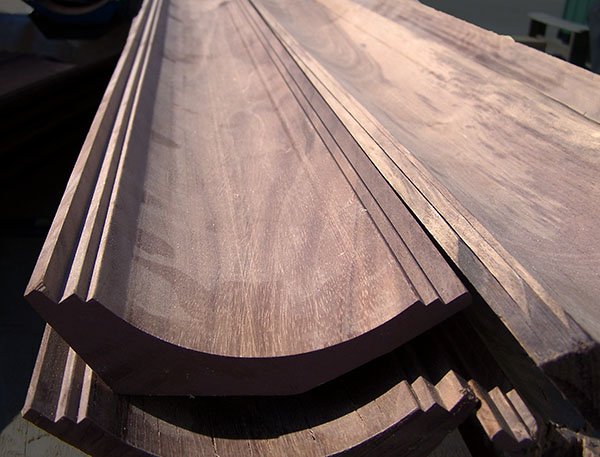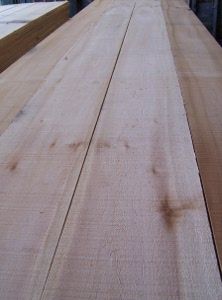I have been going through lots of kiln dried black walnut lumber this year. I have a preference for air dried, I just find the warm reds and even the creamy sapwood more interesting. Unfortunately air dried walnut is hard to come by regularly especially where I'm located on the coast. So for some projects I have to use kiln dried. I've used three different suppliers for kiln dried and I am having the same issue from all of the suppliers I've tried. I purchase it rough sawn. I can pick out boards at my local supplier where they charge $ 8-10 /bdft for premium grade. I can pick for length, width, and knots. I look for hints of live edge that would tell me there is sapwood present. But I cannot tell looking at a kiln dried walnut board with its ends painted and tell if it is mostly heart wood or sap wood. I have been in the habit of purchasing 20-30% more than I need. I get boards wider thicker and longer than I need and I get a couple extra boards.
This week I went to my local supplier so I could pick out some boards as I needed to replace a couple boards for a project. The manager who I like and trust spoke about the walnut, and he said how he no longer gets walnut for the midwest and what he get from Virginia is 90% heartwood. When I got back to my shop 3 out of 4 of the boards I carefully selected were unusable because one side of the 4/4 board was completely sapwood. (These are interior partitions of a cabinet, seen from both sides.)
I've been using walnut for 20 years and I don't recall this being such a problem, I am burning so much walnut scraps that are unusable. All while walnut prices are at an all time high. Have they changed the grading process? Have any of you noticed the same problem? Is there a way to look at kiln dried rough sawn walnut with the ends painted and know if the board is all sapwood or all heartwood?
This week I went to my local supplier so I could pick out some boards as I needed to replace a couple boards for a project. The manager who I like and trust spoke about the walnut, and he said how he no longer gets walnut for the midwest and what he get from Virginia is 90% heartwood. When I got back to my shop 3 out of 4 of the boards I carefully selected were unusable because one side of the 4/4 board was completely sapwood. (These are interior partitions of a cabinet, seen from both sides.)
I've been using walnut for 20 years and I don't recall this being such a problem, I am burning so much walnut scraps that are unusable. All while walnut prices are at an all time high. Have they changed the grading process? Have any of you noticed the same problem? Is there a way to look at kiln dried rough sawn walnut with the ends painted and know if the board is all sapwood or all heartwood?



